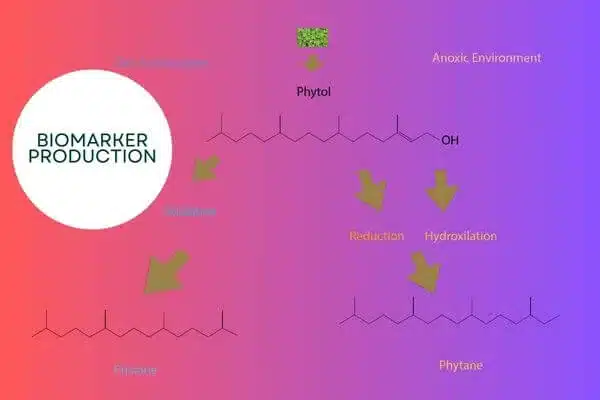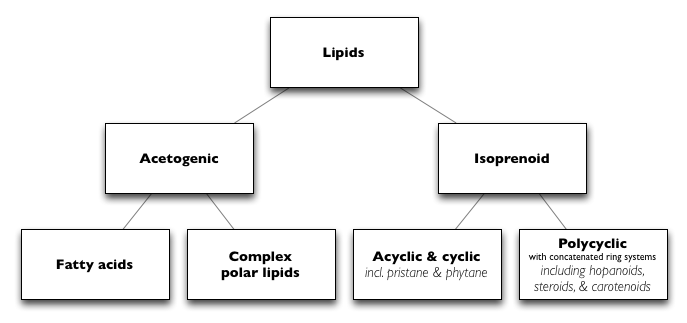
Definition of lipids
Lipids are organic compounds containing mainly carbon and hydrogen with subsidiary oxygen, nitrogen, phosphorous, and sulfur. Lipids are made by living organisms and are operationally defined as being insoluble or immiscible in water, and soluble in non-polar solvents such as chloroform.
How are lipids composed?
Lipids comprise a tremendous array of chemical structures and functions. Most importantly, lipids are the building blocks of organismic cell membranes, that is, the stuff that separates the cell’s self from its non-self.
Following is a rough map as to how to think about lipids classification.

Biomarkers are molecular fossils. It is a stable molecule formed by the decomposition of organic rock sediment in the soil. You can learn more from the link below. >>Biomarker classification
Lipids are a vital part of our cells. It is also used in the geological study. Learn more >>>Lipids




